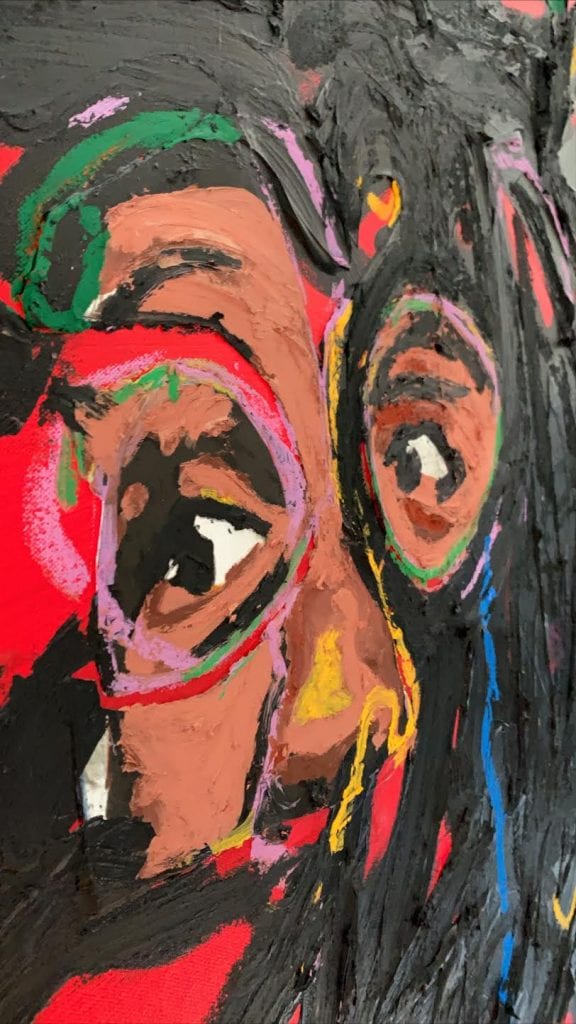Brooklyn-based artist, Milo Matthieu presents an organic introspection of the self, understood broadly in the academic field and brought straight to the canvas. Matthieu’s complex works check in with deep philosophical questions of identity and self-perception. Through a diverse palette of earth tones and primary colors, collage, and other forms of mixed media, Matthieu is quickly becoming a pillar in diasporic contemporary art. The artist often distorts his subjects in the mainly bi-dimensionary compositions to an almost cubist point, where the viewer is left to dialogue with their own identity and self image. Read below to learn more about the artist, his background, process, and inspiration.
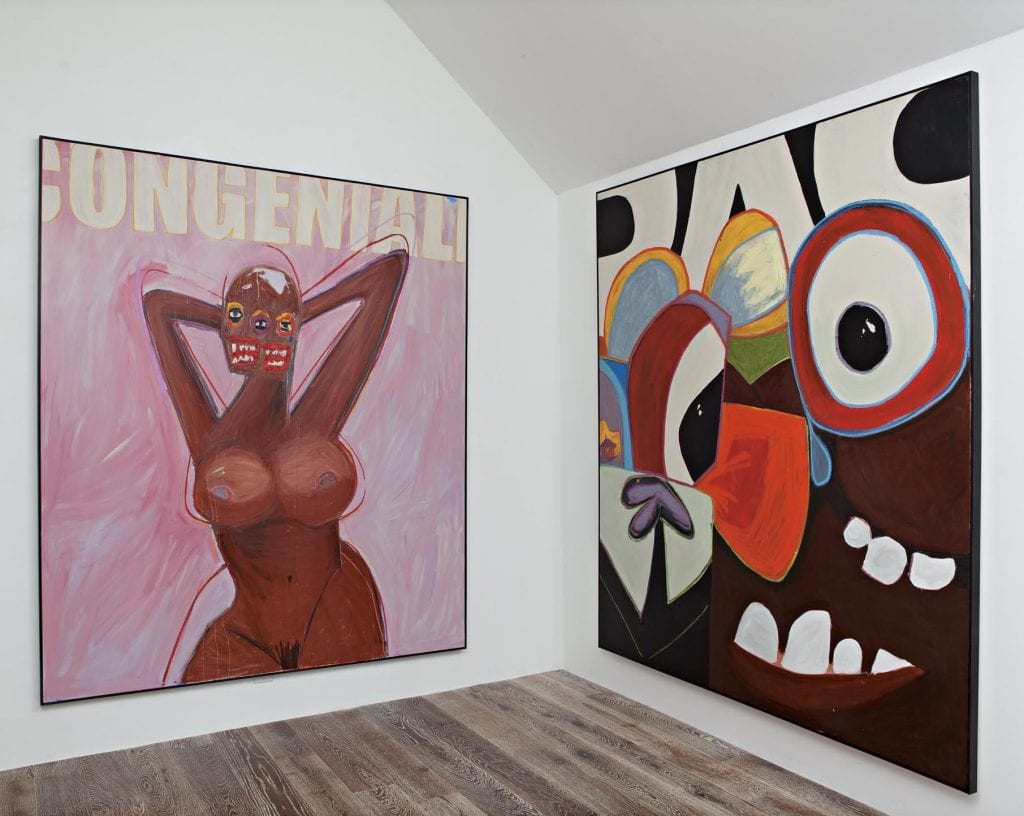
Installation View at The Cabin, LA, Isolated Thoughts, 2020, Courtesy of the Artist and The Cabin, LA
Tell us a little bit about yourself. Where are you from, and when did art first enter your life?
I was born in Los Angeles but grew up in New York for the majority of my life. My parents always had us involved in the arts. Then, it was more from a spectator’s point of view than a contributing member of the society. From the museum shows to local ballet performances, my parents always felt that art was at the bare essence of individuality. So the philosophies that have inspired historical art movements have always been present in my life.
It wasn’t until college, that I started to experiment with different creative mediums. I first started with music and then made my way to photography. I enjoyed music production and music theory, but the visual arts truly captured me. For my thesis project, I started to experiment with collage and the layering of paint on my photographs.
The freedom that painting gave me was addictive and I was looking for a fix.
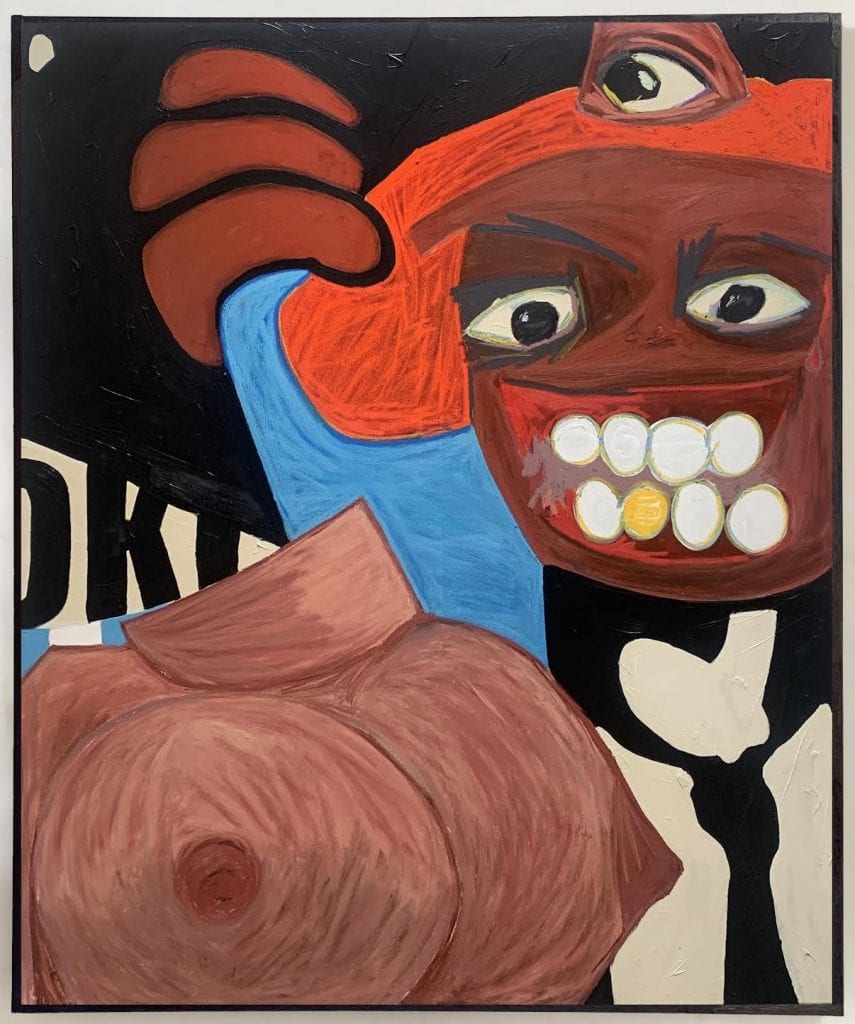
Kingston in the Spring, 2020, Oil and Acrylic Paint on Canvas, Courtesy of the Artist
Has your art always taken on the style it currently embodies?
My work has taken many different directions over the years, though I would say the general essence has remained the same. I’ve always enjoyed exploring the different facets of identity by distortion of the human anatomy– creating different commentaries on self-perception.
It’s the most difficult layer of thy self to unlock. What is identity? Is identity a self-taught understanding or is it a predestined path?
I’m not sure if there is one universal answer but I’m happy to explore it through the depths of my work.
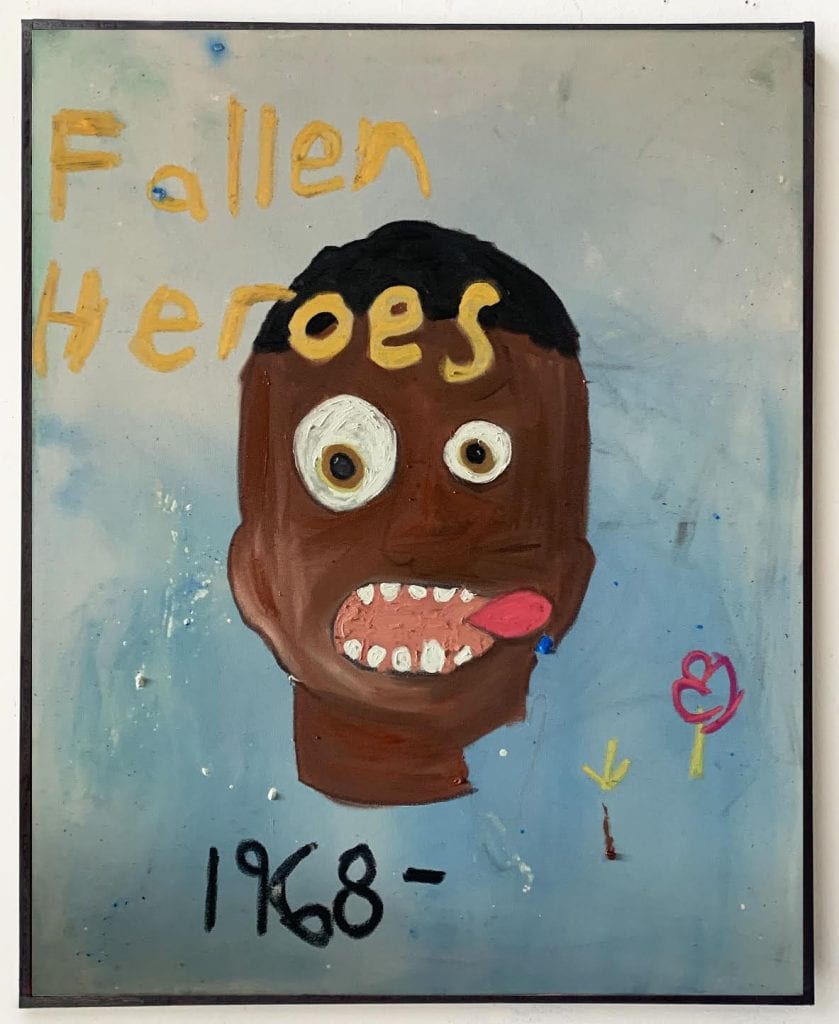
Fallen Heroes, 2020, Oil and Acrylic Paint on Canvas, Courtesy of the Artist
What is your process like? How do you begin work?
It all depends on the series that I’m working on. They usually start as rough sketches and end as impromptu acts of feeling and expression. The sketch serves as the spine, allowing myself to be more expressive and loose within the flesh of the work.
From day one, the most important aspect of creating is that it serves as an outlet. It has always been a meditative practice for me. That’s why I’ve naturally gravitated towards the philosophy of “Psychic Autonomism”, The practice of thought at its purest form, absent of any control exercised by reason, allowing unconscious thoughts to prevail.
“Psychic Autonomism” is a study by Andre Breton, a French writer from the early 20th Century. He is one of two writers that wrote the “Surrealist Manifesto’s” which has inspired the popular movements we all know as Dadaism and Surrealism. Many are not aware that Breton was very inspired by Haitian surrealist painters and would travel to Haiti to study the parallels of the art.
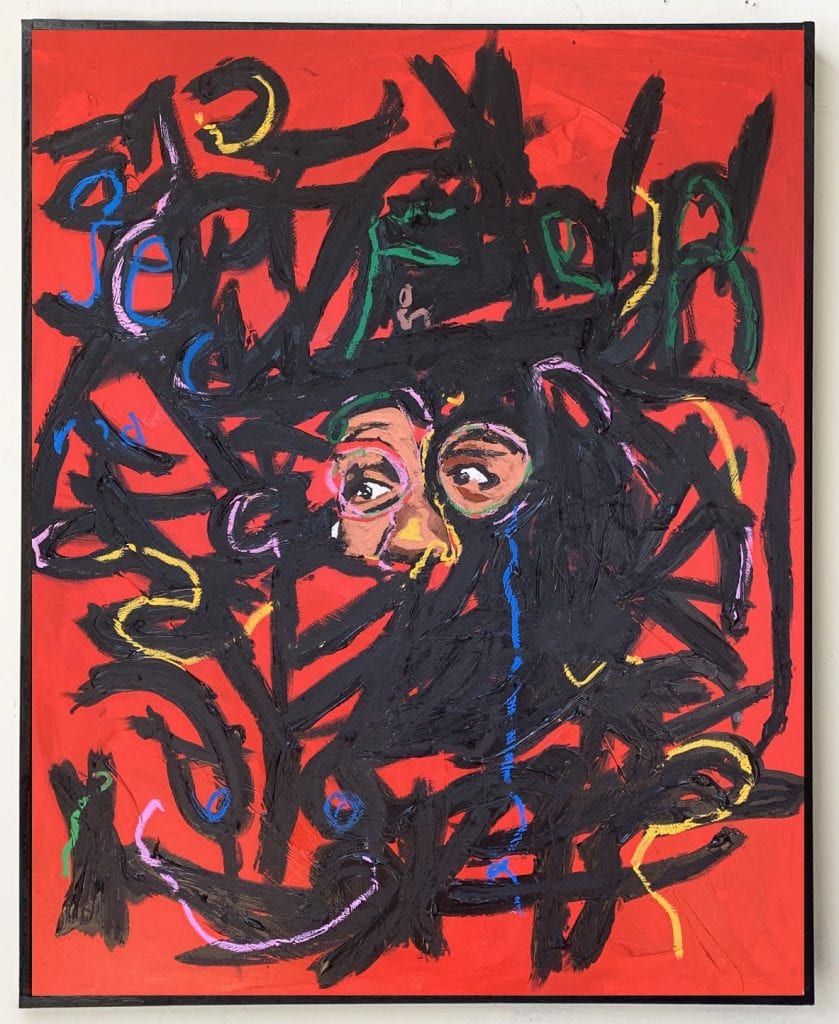
Silenced Yet Celebrated, 2020, Oil and Acrylic Paint on Canvas, Courtesy of the Artist
Walk us through a day in the studio.
A day in the studio usually consists of espresso in the morning followed by an accompaniment of music. I love to work on multiple pieces at a time– It helps the ideas flow out organically. I don’t really have any special traditions or routine— I just wake up and go.
I feel most stable when creating.
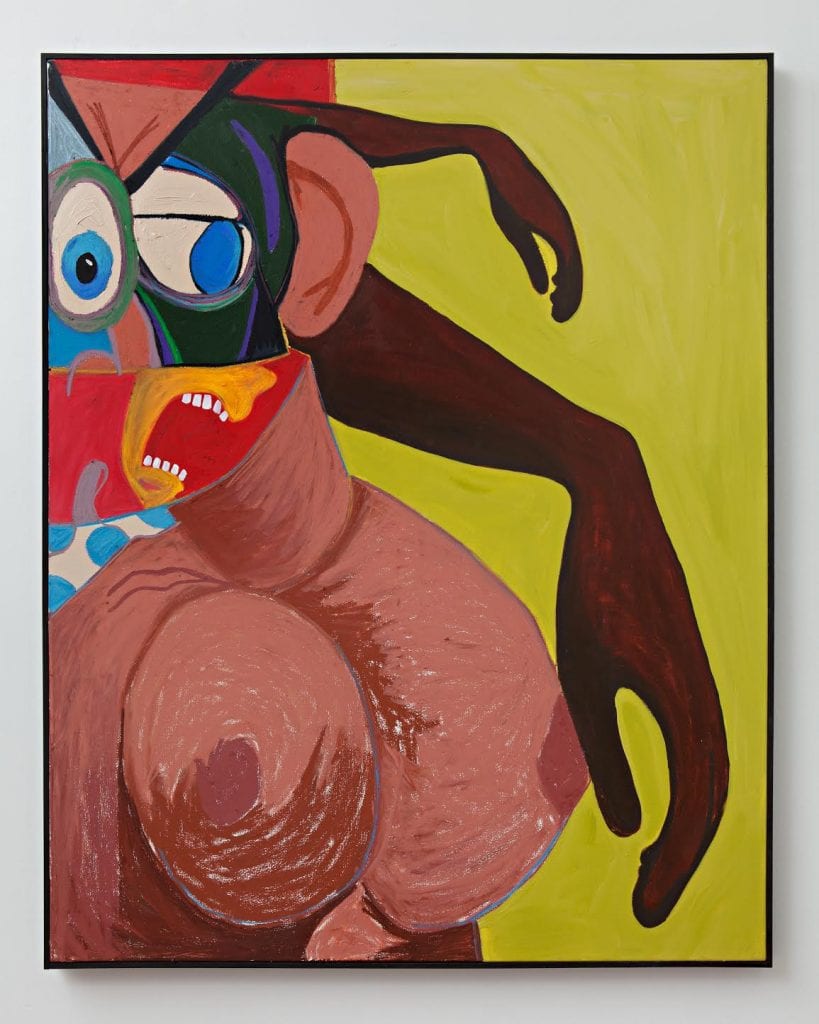
A Mirage, The Tragic Comedy, 2020, Oil and Acrylic Paint, Courtesy of the Artist
Where do you draw inspiration from?
My greatest source of inspiration is a direct result of my travels and introspective conversations. There’s nothing I love more than being somewhere new and experiencing the life and culture of the people– It always brings me clarity and perspective.
I normally don’t create during my travels, rather gather materials and photos to use when I return home. Memories are the backbone of all my creations– which has been one of the aspects of my practice that has been affected in recent months.
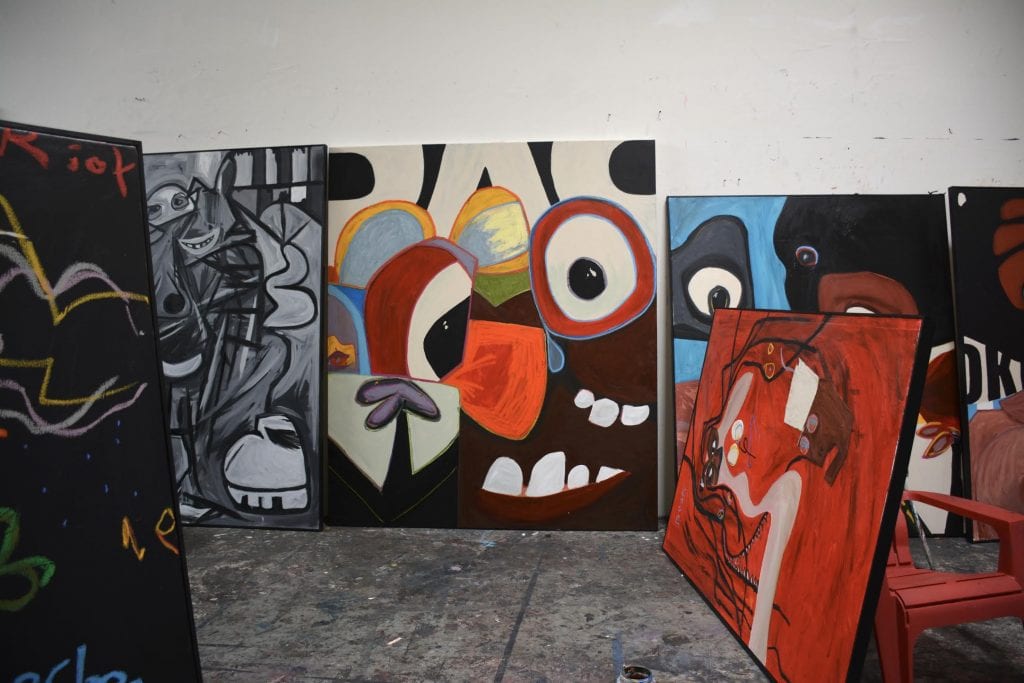
View of the Artist Studio, La Brea Residency, LA
Has your work changed in lieu of the recent pandemic?
I don’t believe my work has been directly affected by the pandemic. My practice has always been a result of a curated life of introversion. When the pandemic hit, my day to day routine did not drastically change. I was grateful enough to be at an art residency in Los Angeles so I had all the tools and sunshine to continue to seamlessly produce and operate– shout out to Danny First.
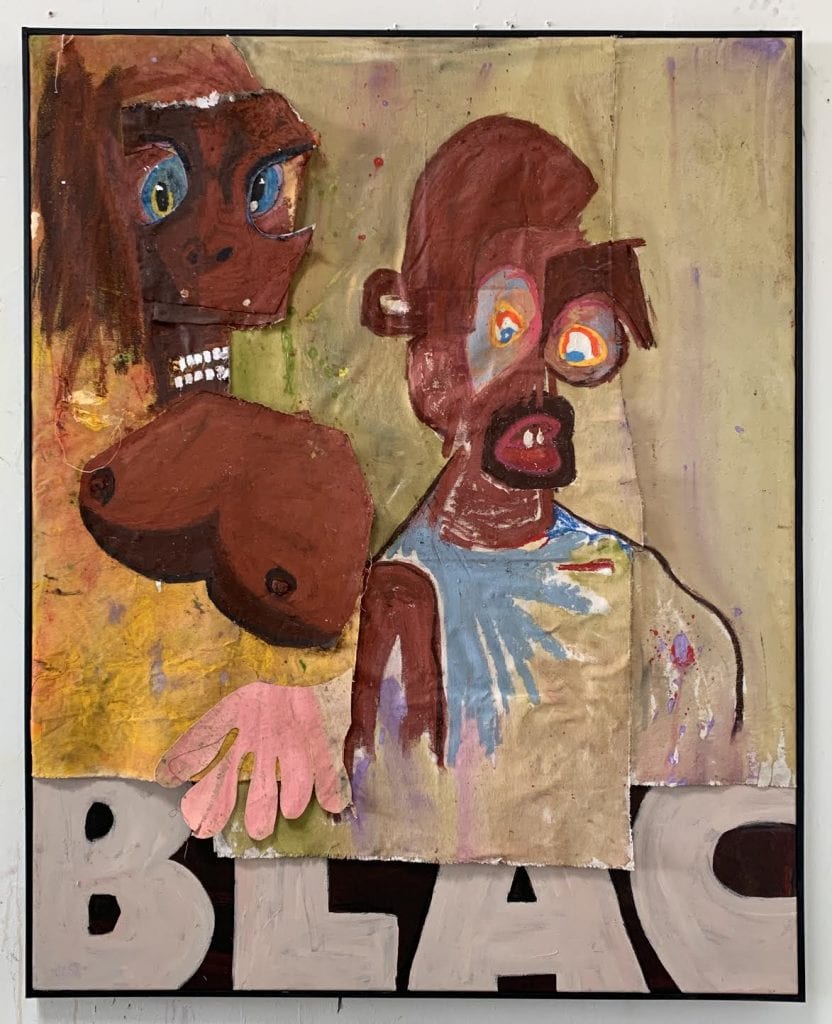
Too Obvious, 2020, Oil and Acrylic Paint on Canvas, Courtesy of the Artist
What source material do you base your work off of?
I base the work on my own life experiences and thoughts. I believe thy self and subconscious are two of the greatest sources of inspiration. Though at times they feel like contradicting paths, they both guide us to the ultimate truth of understanding. The practice of psychic automatism really allows ideas to flow naturally. We have so many experiences and images that are stored in the great depths of our selves that are waiting to be expressed and unlocked. I think that’s why I’m drawn to visual art and music– both mediums serve as vessels to those subdued thoughts and feelings.
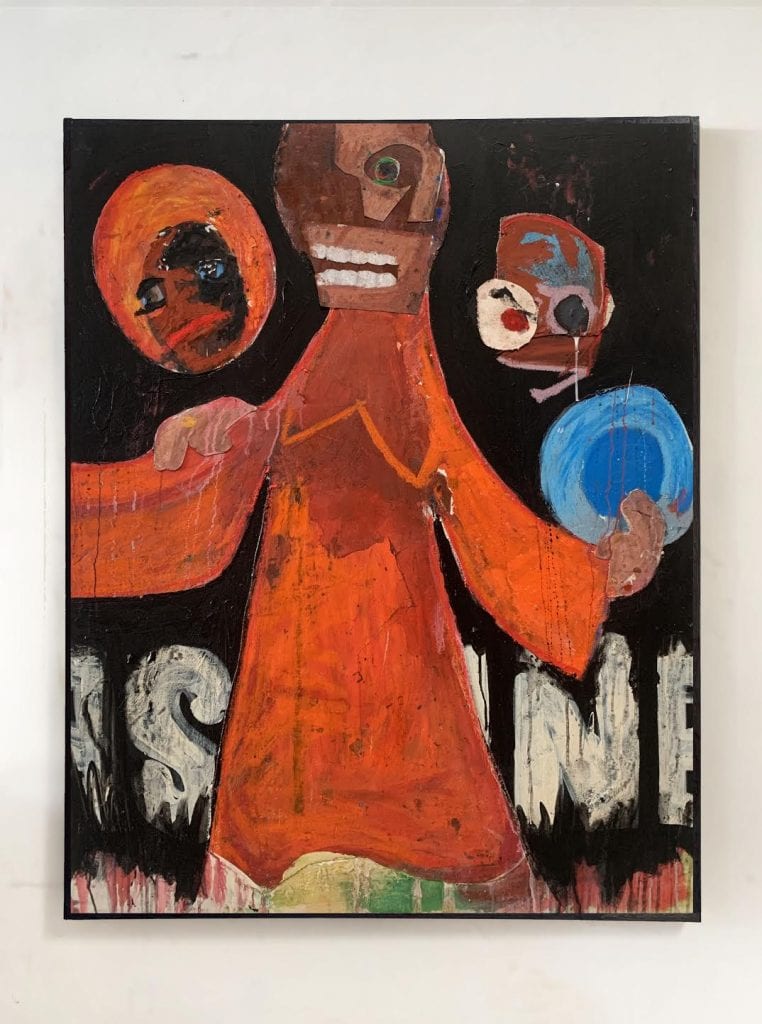
A Peturbed State, 2020, Oil and Acrylic Paint on Canvas, Courtesy of the Artist
Does your work reference any Art Historical movements?
When I first started painting, Surrealism was my favorite historical movement. There was something about the work that really challenged the way I saw day to day life. Artists like Hector Hyppolite, Salvador Dali, and Renee Magritte helped me train my mind to think in a more abstract place. It’s the main reason I enjoyed the collaging when I was younger.
Over time, my love grew for other movements such as abstract expressionism. Where artists like Lee Krasner & Williem de Kooning created beautiful works that felt so liberating in process. It’s truly inspiring.
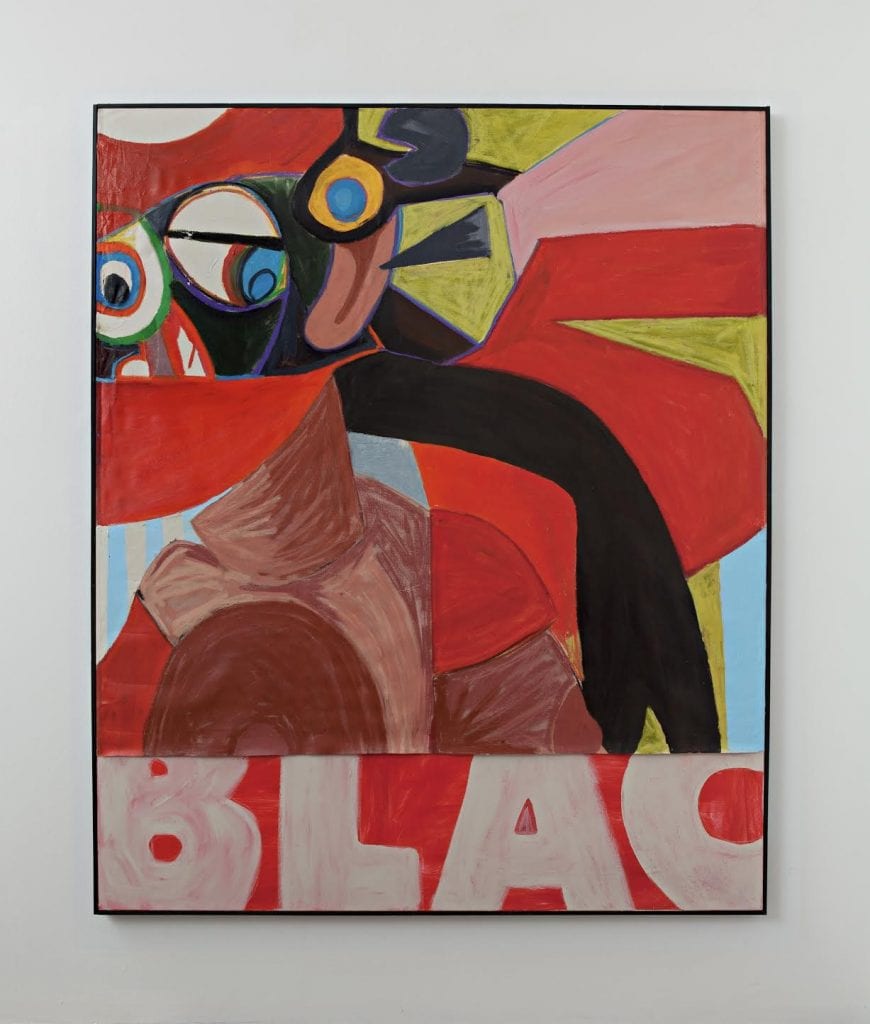
Frankensteins Creature, 2020, Oil and Acrylic Paint on Canvas, Courtesy of the Artist
What’s next for you?
At the moment, I’m working on a new body of work called, “Under the Sun”–titled still under revision. “Under the Sun” is a depiction of personal memories and historical references that have greatly impacted my life. Moments that helped me dissect the art of language.
The references range from Langston Hughes’s poems, from a book that I owned as a child, to “Mittens Playhouse”– the birth of Bebop Jazz located on 118th. The work also references more personal notes such as memories of my esquire of boyhood and portraits of my family in Haiti.
In this new series, I wanted to embody a new voice of expression. Rephrase the way I use my own language in painting to depict a sense of liberty and celebration. I can’t wait to share.
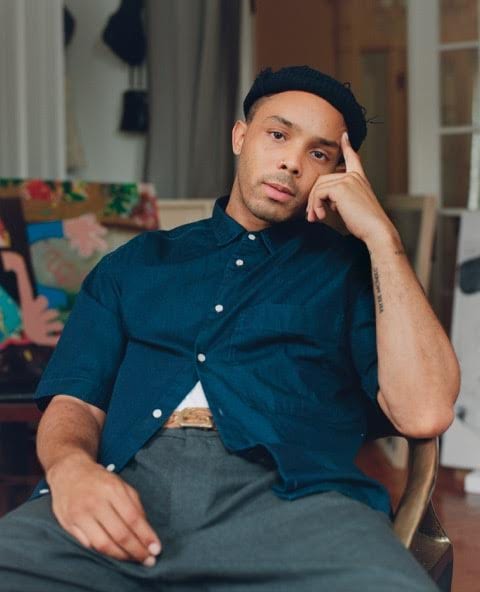
Milo Matthieu at his Brooklyn Studio, Shot by Eduardo Silva
At the end of each interview we like to ask the artist to recommend a friend whose work you love and would like us to interview next. Who would you suggest?
It’s hard to settle on one specific artist. I would say either Marcus Leslie Singleton, who creates these conversations depicting everyday life by combining colors and familiar scenarios, or Asif Hoque, whose paintings are beautiful portraits of these mythological god-like creatures.
